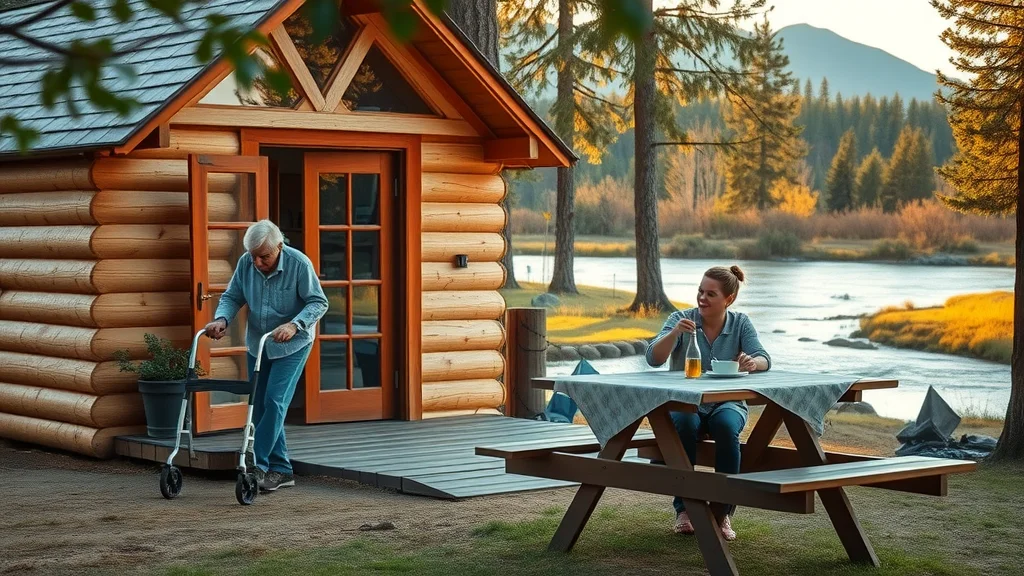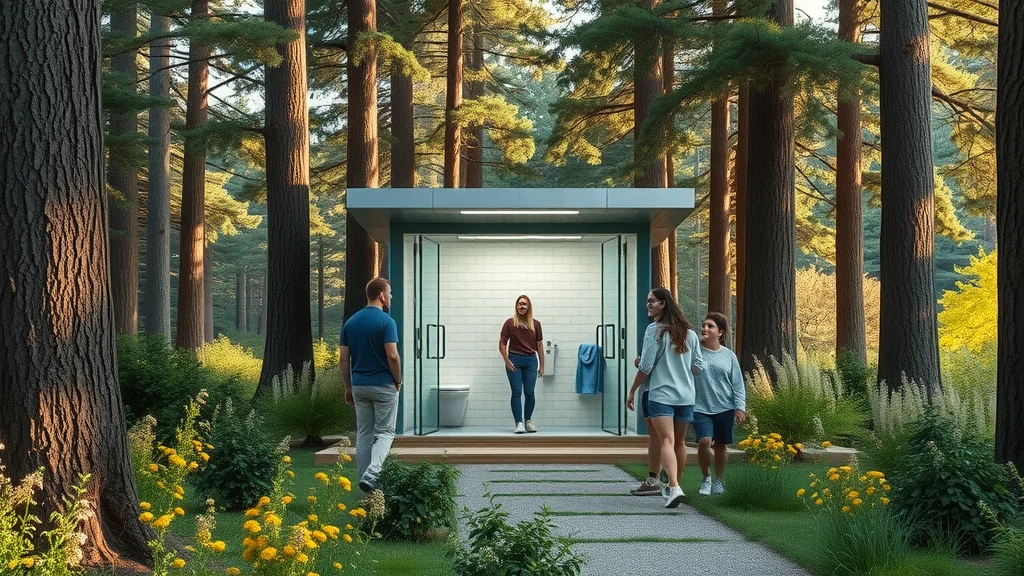Introduction: Why Access to Nature Matters More Than Ever
Imagine standing on the edge of a quiet river, hearing only the wind in the trees and the birds overhead. For many, camping is more than a weekend hobby—it’s a way to recharge, connect with loved ones, and discover new corners of the natural world. But what if the simple act of pitching a tent or parking a van eludes some people due to accessibility hurdles? The promise of the great outdoors should never be limited by mobility, location, or the fine print on a reservation form.
Accessible campground sites have quickly become not only a hallmark of inclusiveness, but a necessity for equal enjoyment of public lands. While state parks and campgrounds across the country are striving to make space for everyone, the difference between just “getting by” and truly “getting away” can come down to details: terrain, proximity to amenities, even the little comforts that make camping special. This article unearths what you need to know to unlock the doors—sometimes literal ones—standing between you and an unforgettable escape.
Whether you are a seasoned camper seeking easy access for family members, or you’re new to outdoor adventures and want to know your options, discovering accessible campground sites is not just about the physical environment. It’s about creating opportunities, breaking barriers, and ensuring comfort and enjoyment for all. Let’s explore why these accommodations matter, and how they’re quietly transforming the way we engage with America’s wild spaces.

Accessible Campground Sites: The Gateway to Inclusive Outdoor Experiences
Accessible campground sites aren’t simply regular campsites with wider paths. They are the foundation for experiences that welcome everyone, regardless of physical ability or background. At their best, accessible sites provide level, stable ground for tents or vans, clear pathways to restrooms, and proximity to the heart of the campground—the activities and amenities that make trips memorable. Accessibility, in the outdoor context, is about minimizing barriers: from uneven terrain that challenges wheelchairs and strollers, to creativity in providing alternative overnight options like yurts and cabins.
The significance of these thoughtfully designed sites goes beyond the physical landscape. When accessible campground sites are available, families can plan inclusive vacations. Friends with varying abilities can share the same adventure. Senior campers who once paused at the idea of “roughing it” can now find both comfort and community. However, a lack of understanding about what makes a site truly accessible can mean missing out on these transformative experiences—or encountering frustrating challenges during what ought to be a relaxing retreat. As demand continues to rise, knowing how to identify and secure truly accessible campground sites is essential for maximizing both convenience and joy.
Why Accessible Campground Sites Improve Comfort, Safety, and Adventure

For many outdoor enthusiasts, the right accommodations can define an entire trip. Both frequent visitors and newcomers are realizing that accessible campground sites aren’t about limited mobility—they’re about maximizing everyone’s experience, regardless of needs. Expertly designed sites integrate clear signage, stable surfaces, accessible restrooms with clean showers and toilets, and proximity to nature’s highlights, ensuring comfort is never traded for adventure. Amenities like flush toilets, dishwashing stations, and level parking pads serve all campers, especially those who require easy navigation or use assistive devices.
These well-considered features don’t just boost safety—they help eliminate the common anxieties of outdoor travel. Seamless access to essential facilities means more time for strolling along riverbanks, gathering around campfires, or simply enjoying the tranquility of the woods. Accessible campground sites also make it easier for multigenerational families or groups with varying abilities to share in the journey, turning a weekend getaway into a shared memory. In sum, the true value of accessible sites lies in their ability to create comfort and inclusion, letting everyone focus on soaking up nature rather than worrying about logistics.
How Modern Amenities Elevate the Accessible Camping Experience
Today’s most inviting campgrounds have reimagined what it means to “head outdoors.” Accessible campground sites now often feature amenities that rival those of home, with an eye toward both convenience and universal design. Multiple loops may provide flush toilets, sinks, and even outdoor dishwashing areas, breaking down stereotypes that camping must always mean “roughing it.” Electric hookups, easy-to-navigate pathways, and clear proximity to scenic overlooks or accessible trails help all visitors feel empowered to participate fully.

The rising popularity of cabins and yurts adds another dimension of inclusion. For campers who may be uncomfortable sleeping in tents or who need firm, sheltered structures, these options offer both security and proximity to natural beauty. These features respond directly to the needs of families, active seniors, and anyone seeking the freedom of the outdoors with the comforts they depend on. The accessible campground site thus becomes not only a resting place, but a launchpad for exploring rivers, hiking scenic trails, and discovering new wildlife.
From Reservation to Relaxation: Tips for Securing the Right Site
Discovering the ideal accessible campsite starts with careful planning. Reputable parks and campgrounds provide a wealth of information online, often including interactive maps, photos, and detailed site descriptions. Look for specific markers: paved or packed surfaces, ramped ways to facilities, and proximity to amenities like restrooms or water.
Another important angle is timing and flexibility. Accessible sites often fill up quickly, especially in popular destinations or peak seasons. Early reservations are key, and many systems now let users filter by accessibility features to streamline the process. For spontaneous adventurers, first-come, first-served options still exist—researching policies ahead of time helps ensure you don’t arrive to find all accessible spots taken. And don’t hesitate to call ahead with questions or special requests; staff are often happy to clarify details and offer local advice.

Why Understanding Accessibility Can Change Your Outdoor Experience
Being well-versed in the language of accessibility can transform an average trip into a truly inclusive journey. It’s not only about ramps and rails—it's about recognizing how surrounding environments, amenities, and community spirit shape the camping story for all involved. Education around accessible campground sites also empowers campers to advocate for themselves, ask the right questions, and ensure their needs are considered and met.
This level of awareness also creates a traveling community grounded in empathy. When all guests—regardless of age, ability, or confidence—feel seen and served, the campground evolves from a collection of campsites to a place of shared pride and participation. The more people know, the more likely they are to champion accessibility in other places they visit, helping the movement for inclusive outdoor spaces thrive nationwide.
Tumalo State Park Campground’s Vision for Accessible Adventure
Tumalo State Park Campground exemplifies a dedication to welcoming guests of all backgrounds and abilities. This approach is grounded in a belief that public lands are for everyone, reflected in the park’s array of thoughtful amenities and event programming. With clean, well-maintained bathrooms—including flush toilets, ample showers, and practical dishwashing spaces—campers can expect an experience that removes unnecessary obstacles from their stay.
The presence of cabins and yurts, set in scenic surroundings along the Deschutes River, offers alternative lodging for those seeking both comfort and adventure. Tumalo’s close proximity to essential services and local attractions—like grocery stores or vibrant city centers—means all visitors enjoy the best of both worlds: immersion in nature and efficient access to supplies or medical care as needed. The underlying philosophy is that outdoor experiences should never hinge on ability or circumstance, but instead open doors for exploration, relaxation, and lifelong learning.
The ethos echoed throughout the park’s communications is clear: inclusion and diversity are at the heart of their mission. By continually offering event calendars, clear guides, and a transparent reservation process, Tumalo demonstrates that accessible campground sites are more than just checklists—they’re commitments to serving every camper and traveler who wants to experience Oregon’s natural beauty.
Success on the Ground: Campers Share Their Accessible Experiences
Words from people who have stayed at a site can offer clarity no brochure provides. For many, discovering accessible campground sites is life-changing—and lasting memories often come from how well a park balances comfort, convenience, and connection with nature. One camper, Orlando G., captured his experience this way:
Tumalo State Park is hands down one of the best camping spots out there. The bathrooms are super clean, with great showers and toilets – a big plus when you’re camping. If you’re staying overnight, the yurts or cabins are definitely the way to go for comfort and convenience.The Deschutes River runs right through the park, and it’s perfect for floating on tubes or rafts during the summer. We even saw plenty of wildlife, including adorable rabbits hopping around – five-star entertainment!Another big bonus: Costco is only about 3 miles away, and you’re just 15 minutes from Old Bend. Easy access to everything you might need while still feeling like you’re out in nature. Absolutely my top pick for camping
Real stories like these remind us that the best campgrounds blend thoughtfulness and trust, creating access in ways that matter for actual travelers. For anyone ready to make new memories, accessible campground sites are pathways to comfort, discovery, and time spent together in the outdoors.
Inclusive Camping is the Future of Outdoor Adventure
As public awareness grows, the future of camping is becoming simpler, safer, and more accessible. The movement towards accessible campground sites signals a shift from accommodation as an afterthought to integration at every step of the camping journey. Tumalo State Park Campground stands out as a voice in this landscape, illustrating how facilities, events, and holistic planning combine to maximize joy for outdoor enthusiasts of every ability. Whether you’re planning your first venture or your hundredth, accessible campground sites now make it possible for all to savor Oregon’s wild beauty—no exceptions required.
Contact the Experts at Tumalo State Park Campground
If you’d like to learn more about how accessible campground sites could benefit your camping experience, contact the team at Tumalo State Park Campground.
📍 Address: 64185 O. B. Riley Rd, Tumalo, OR 97703, USA
📞 Phone: +1 541-388-6055
🌐 Website: http://oregonstateparks.org/index.cfm
Tumalo State Park Campground Location and Availability

 Add Row
Add Row  Add
Add 





Write A Comment